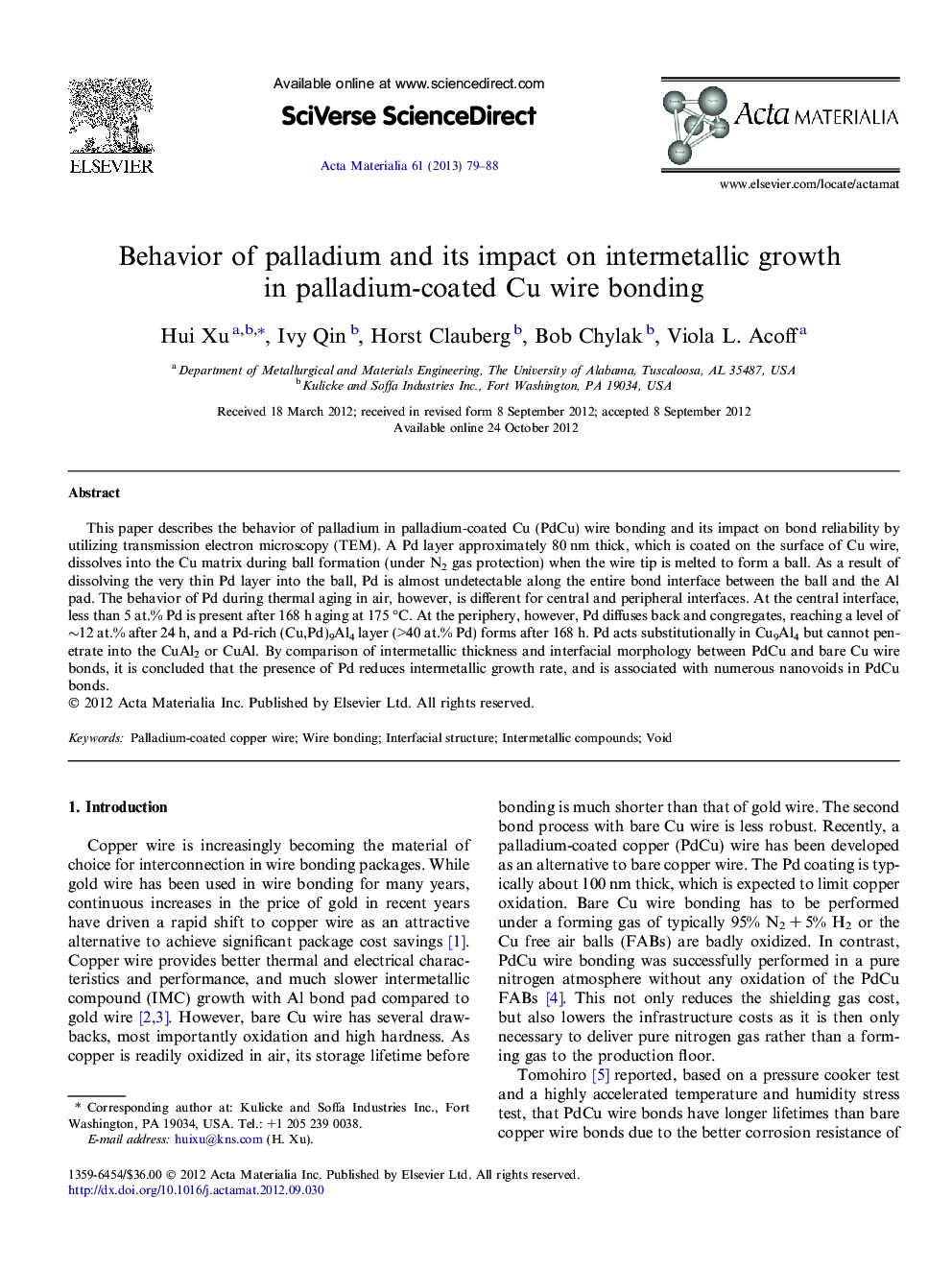| Article ID | Journal | Published Year | Pages | File Type |
|---|---|---|---|---|
| 10620309 | Acta Materialia | 2013 | 10 Pages |
Abstract
This paper describes the behavior of palladium in palladium-coated Cu (PdCu) wire bonding and its impact on bond reliability by utilizing transmission electron microscopy (TEM). A Pd layer approximately 80 nm thick, which is coated on the surface of Cu wire, dissolves into the Cu matrix during ball formation (under N2 gas protection) when the wire tip is melted to form a ball. As a result of dissolving the very thin Pd layer into the ball, Pd is almost undetectable along the entire bond interface between the ball and the Al pad. The behavior of Pd during thermal aging in air, however, is different for central and peripheral interfaces. At the central interface, less than 5 at.% Pd is present after 168 h aging at 175 °C. At the periphery, however, Pd diffuses back and congregates, reaching a level of â¼12 at.% after 24 h, and a Pd-rich (Cu,Pd)9Al4 layer (>40 at.% Pd) forms after 168 h. Pd acts substitutionally in Cu9Al4 but cannot penetrate into the CuAl2 or CuAl. By comparison of intermetallic thickness and interfacial morphology between PdCu and bare Cu wire bonds, it is concluded that the presence of Pd reduces intermetallic growth rate, and is associated with numerous nanovoids in PdCu bonds.
Related Topics
Physical Sciences and Engineering
Materials Science
Ceramics and Composites
Authors
Hui Xu, Ivy Qin, Horst Clauberg, Bob Chylak, Viola L. Acoff,
